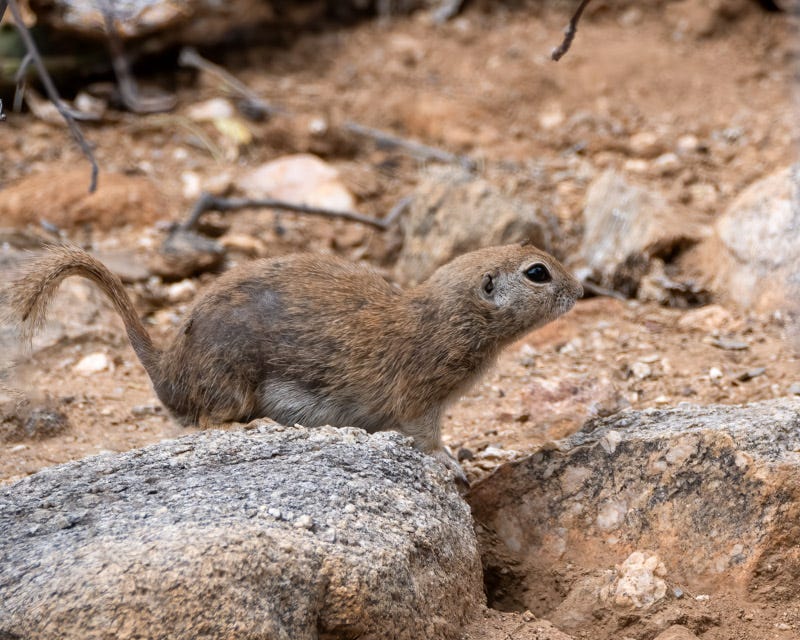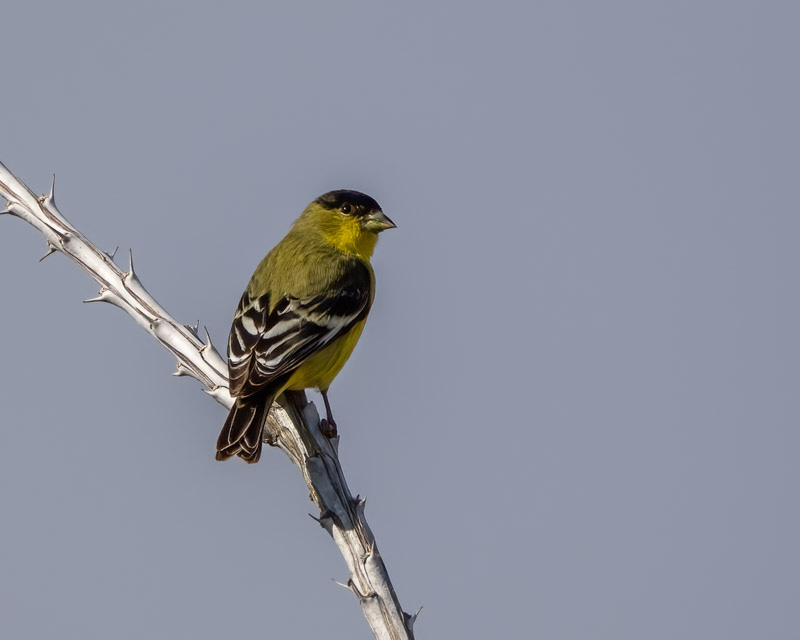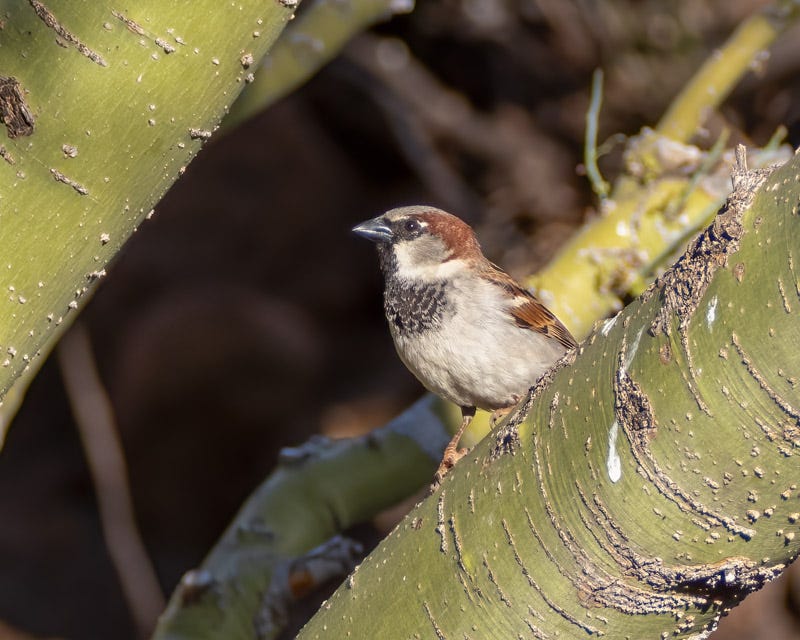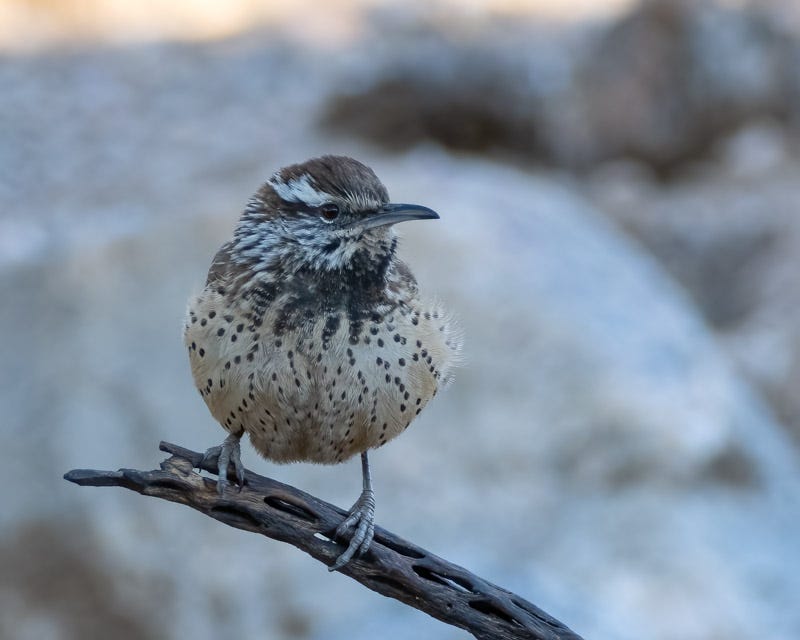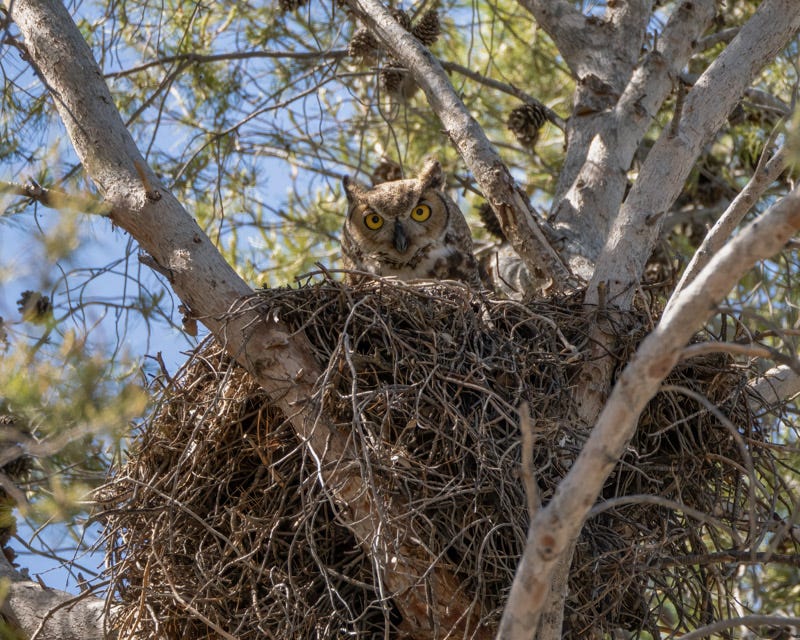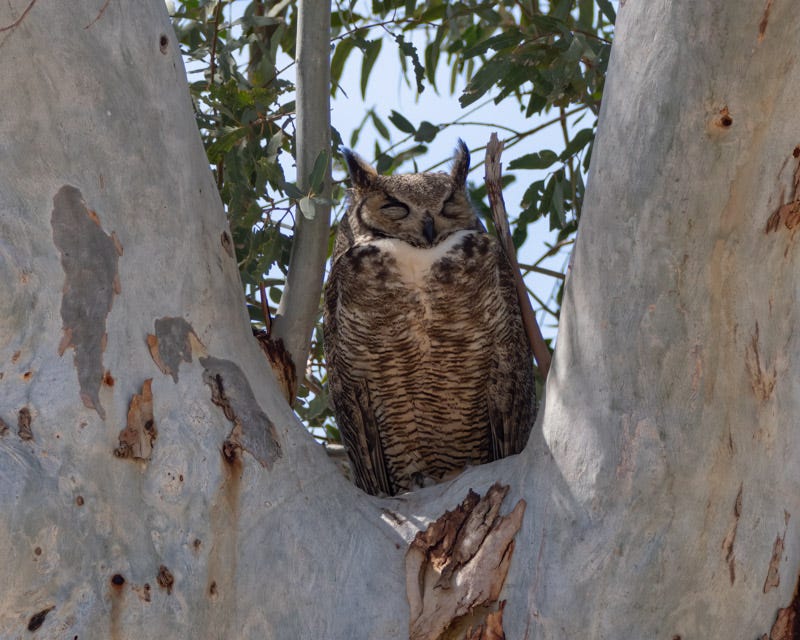Photos from the Backyard and Some of This Year's Owls
It's springtime!
It's springtime and the Round-tailed Ground Squirrels have appeared above ground. This one seems to be right in the middle of shedding its winter fur and regrowing its new spring fur. You can see the old dark fur on its flanks and some old light fur on its face.
The Squirrel was exploring the rock wall in the back of my house. At one point, it just sat up and looked around for the longest time. If you peer closely, you can see what appears to be a small piece of poop (mouse or cricket or??) balanced on top of the Squirrel's head. So besides the bad hair day due to moulting fur, it is also walking around with something embarrassing on its head.
It made its way back to the same rock it had begun its journey on.
Earlier in the season a male Lesser Goldfinch perched briefly on an ocotillo branch. By now, the winter rains have caused all of the nearby ocotillo plants to leaf out and to show brilliant orange flower blossoms on the end of each branch. When I shot the photo, the ocotillo was still barren.
A female Northern Cardinal waited for her turn at the seed feeder. The cholla provided a nice spot to line up and wait. I have several different types of bird feeders hanging in the backyard and those attract birds. The birds may have to sit and wait for an opening on the feeders before flying in. They may also be looking for predators or competitors before flying in, allowing me the chance to take their photo.
A male House Sparrow waited for space to open up on the suet feeder hanging near the palo verde tree. The black feathers on this bird's bib were new plumage when this photo was taken in early March. As the white tips wear off, the bib becomes completely black. That is what the House Sparrows are showing now.
A Cactus Wren awaited its turn on the feeders.
A male Pyrrhuloxia flew in. You can compare his looks to the female cardinal in the earlier photo. The Pyrrhuloxia has a very curved bill and the bird is mostly colored gray or gray-brown compared to the female Cardinal's orange hue.
It is springtime and nesting season for most birds. I've been trying to locate the nests of Great Horned Owls but have had limited success so far. The Great Horned Owl below is sitting in her very large nest where she has raised broods for several years now. The nest, of course, was not built by the owls. They do not build nests. They appropriate nests that were built in prior years by other raptors. In this case a Cooper’s Hawk may have been the original architect.
This Great Horned Owl was perched in a crook of a Eucalyptus tree. I'm not certain whether or not there is a nearby nest.
Near West Ina Road, this nest is high up in an aleppo pine tree. Three young are in the nest but there is a narrow "window" to get a look into the nest. Two of the owlets were awake and paying attention when I visited!
One more reminder: The Desert Museum is looking for more volunteers for Raptor Free Flight's upcoming season. If you have any interest in becoming a 'handler', or know of someone who might, information and applications can be found here: https://www.desertmuseum.org/about/volunteer.php


